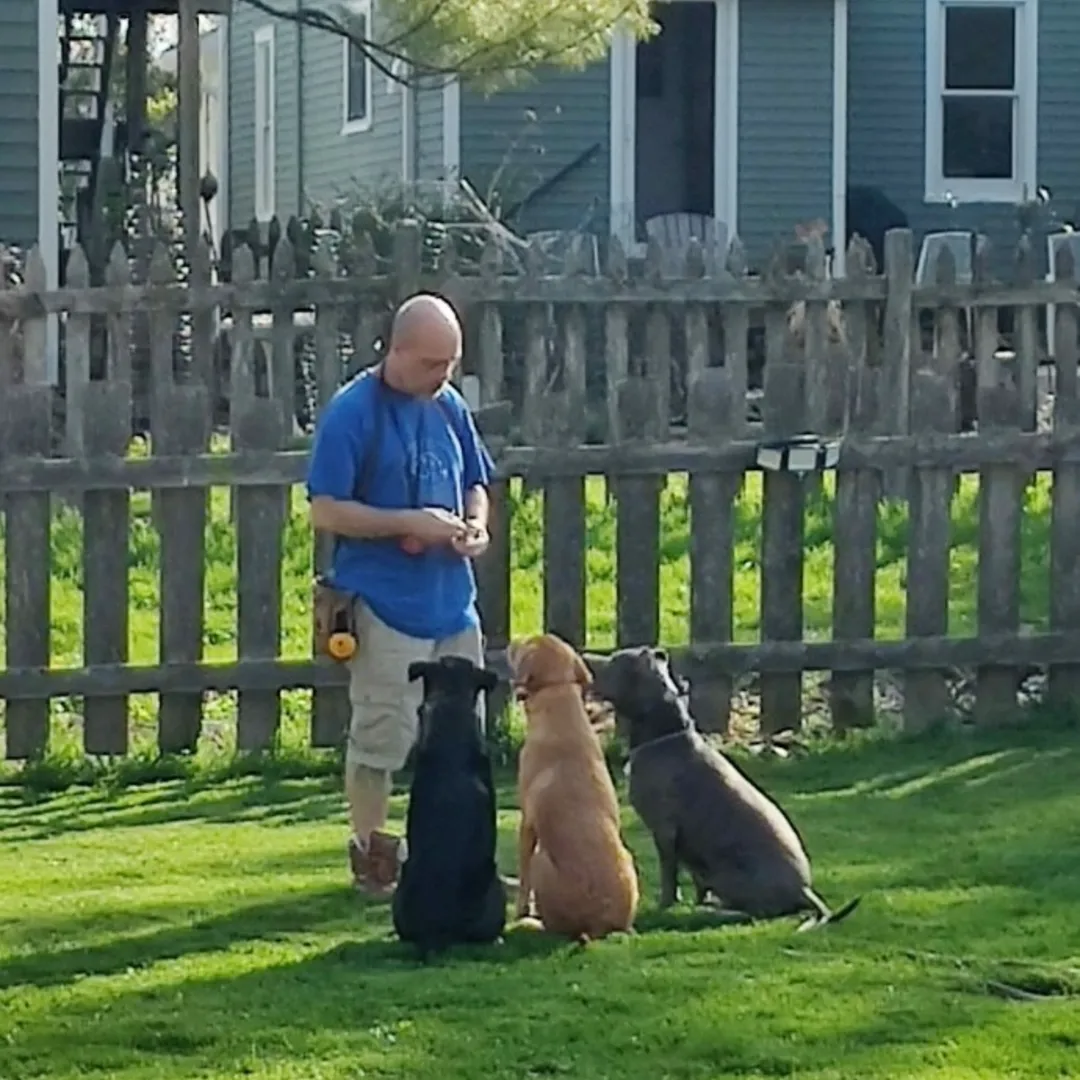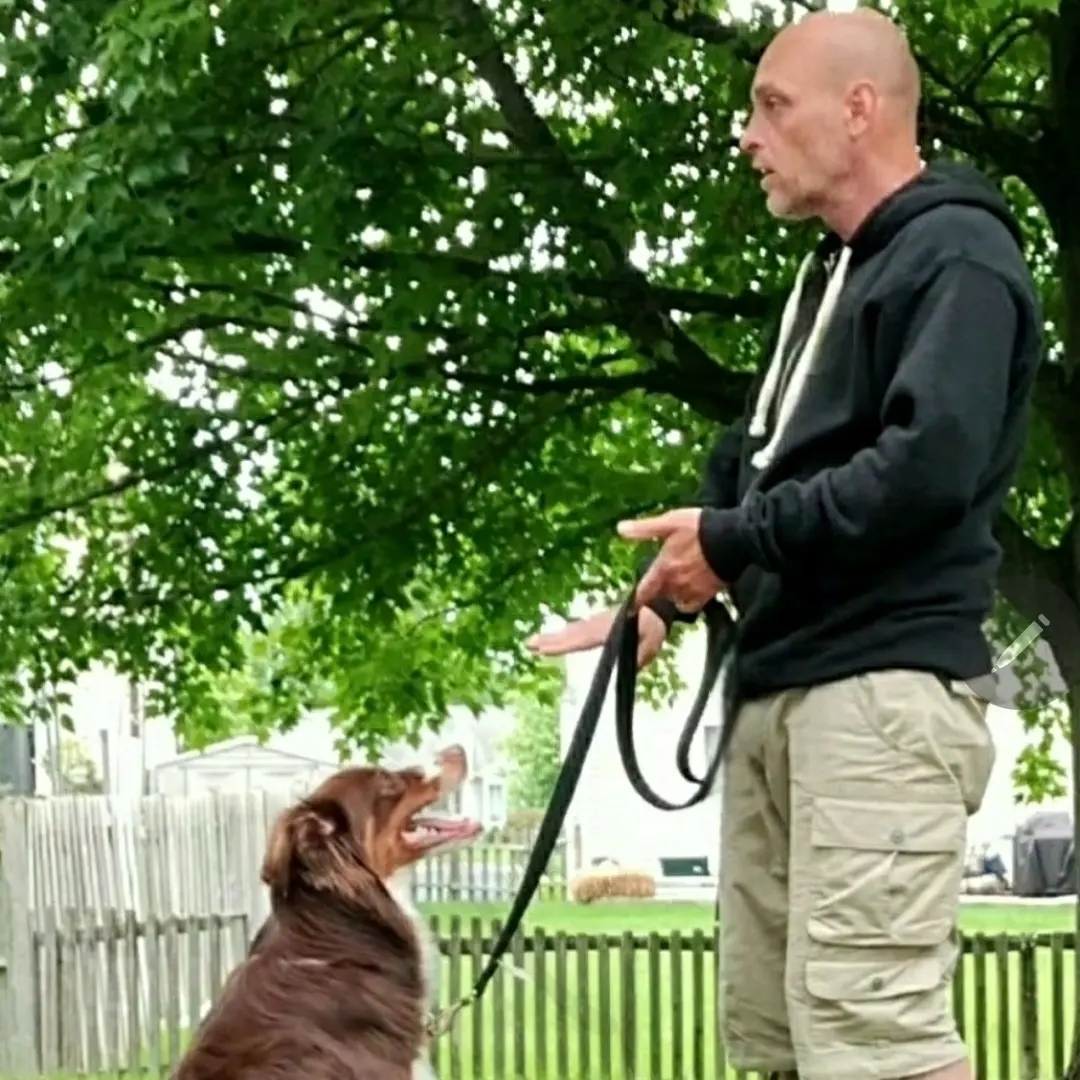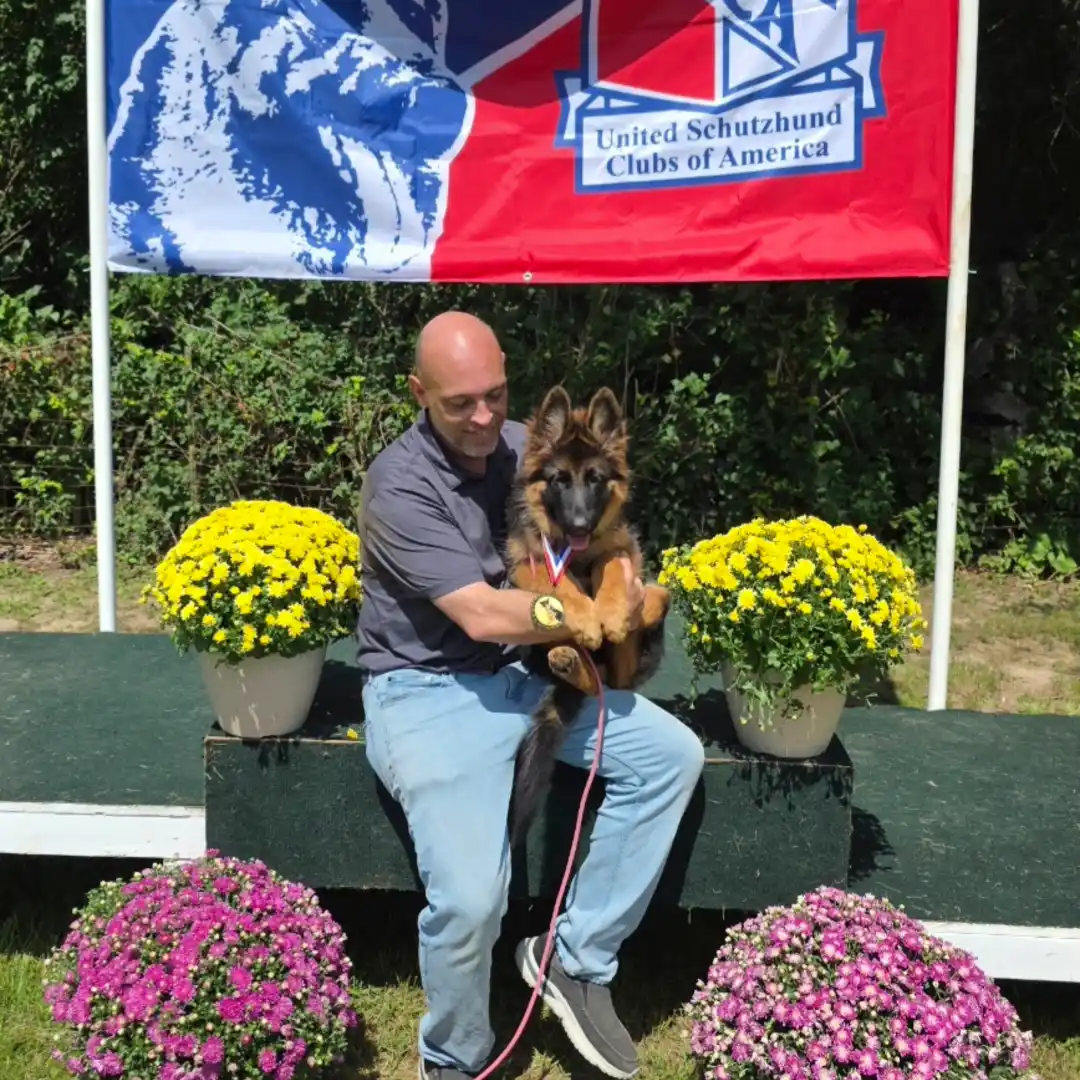DOG SEPARATION ANXIETY TRAINING CHICAGO IL
Looking for the best dog separation anxiety training Chicago, IL, has to offer? Using proven behavior modification and positive reinforcement methods, I help dogs overcome their fear of being alone. Get the peace of mind you deserve knowing your dog is calm and content when you’re away. Get started today with a free consultation!



UNDERSTANDING SEPARATION ANXIETY
Separation anxiety is genuine panic that some dogs experience when separated from their owners. This isn’t misbehavior or spite, it’s overwhelming fear that causes real distress.
Common Signs of Separation Anxiety:
Destructive behavior that only happens when you’re gone
Excessive barking, howling, or whining that starts immediately after you leave
Pacing, drooling, or panting before or during your absence
Attempts to escape (damaging doors, windows, or crates)
House soiling despite being house-trained
Refusing to eat when alone
Following you constantly from room to room when you’re home
Extreme excitement when you return, even if you’ve only been gone briefly
What Separation Anxiety Isn’t: Not every problem when alone is true separation anxiety. Boredom, lack of house training, high energy without adequate exercise, or incomplete training can cause similar behaviors. I assess your dog’s behavior to determine if you’re dealing with genuine separation anxiety or other behavior issues requiring different training approaches.
Why It Develops: Separation anxiety can develop for many reasons: rescue dogs with abandonment history, dogs who’ve never learned independence, sudden schedule changes, traumatic events when alone, moving to a new home, loss of a family member, or genetics. Understanding the cause helps us create an effective training plan.
MY SEPARATION ANXIETY TRAINING APPROACH
Separation anxiety requires specialized behavior modification that differs completely from standard obedience classes. Here’s my proven training approach:

Free Consultation – We start by evaluating your dog’s behavior through detailed history, observation, and sometimes video footage of your dog when alone. This tells us whether we’re dealing with true separation anxiety or other behavioral issues. We examine your dog’s body language, stress signals, and specific triggers.

Gradual Desensitization – The foundation of my training methods involves systematic desensitization. We expose your dog to tiny increments of alone time, starting with just seconds, and gradually increase the duration as they remain calm. Rushing this process makes anxiety worse. Patience is essential.


Counter-Conditioning – Simultaneously, I work to change your dog’s emotional response to your departure. Instead of “owner leaving = panic,” I create “owner leaving = good things happen.” This involves pairing your absence with high-value rewards, engaging toys, or other positive experiences.

Departure Cue Management – Dogs with separation anxiety often panic at pre-departure cues: picking up keys, putting on shoes, grabbing your bag. I systematically desensitize your dog to these triggers by performing them randomly without leaving, reducing their predictive power.


Independence Building – Many anxious dogs never learned to be comfortable alone. We teach independence through exercises that encourage your dog to relax away from you, even when you’re home. This might include “place” training, rewarding calm behavior when your dog isn’t following you, or using baby gates to create brief separations within the house.

Environmental Enrichment – I provide training tips for making your absence less stressful: puzzle toys, frozen treat-dispensing toys, calming music, pheromone diffusers, or safe chew items. These don’t cure anxiety but support the training process.


Realistic Expectations – Separation anxiety takes time to resolve, often months of consistent work. I set realistic goals and celebrate incremental progress. Quick fixes don’t exist, but lasting improvement does with proper training techniques.

Owner Education – Pet owners must understand canine behavior, recognize stress signals, and implement the training plan consistently. Your role is crucial. I teach you everything you need to support your dog’s progress.

WHY CHOOSE STEVE THE DOGMAN?
Specialized Expertise – Separation anxiety requires specific knowledge of canine behavior and behavior modification protocols. I specialize in anxiety-related behavioral issues and have extensive training experience with anxious dogs.
Compassionate Approach – I understand how heartbreaking separation anxiety is for both dogs and dog parents. My positive reinforcement methods never punish or force anxious dogs. I work at your dog’s pace with patience and understanding.
Customized Protocols – Every anxious dog has unique triggers and needs. We create individualized training plans rather than one-size-fits-all approaches. Your dog’s behavior determines my training techniques.
Ongoing Support – Separation anxiety treatment is a journey with ups and downs. We provide consistent support, troubleshooting setbacks and celebrating progress. You’re never alone in this process.
Realistic Expectations – I am honest about timelines and challenges. We won’t promise quick fixes that don’t exist. Instead, I provide realistic expectations and a proven path forward.
Proven Results – I’ve helped countless dog owners throughout Chicago and the surrounding areas successfully resolve separation anxiety. My training methods work when implemented consistently.
WHAT YOUR DOG WILL LEARN
Calm Alone Time – Your dog learns that being alone is safe and temporary. Through gradual exposure, they develop confidence that you always return, reducing panic responses.


Independence Skills – Dogs learn to self-soothe and settle without constant human presence. This might include going to their bed, engaging with toys, or simply resting calmly.

Relaxation Techniques – I teach your dog how to calm themselves when stress begins. This might involve focusing on a food puzzle, chewing a toy, or settling on their mat.


Reduced Reactivity to Departure Cues – Your dog stops panicking when they see you preparing to leave. Keys, shoes, and bags become meaningless rather than triggers for anxiety.

Appropriate Alone Behaviors – Instead of destructive behaviors or excessive barking, your dog learns to engage in calm, appropriate activities when alone.


Increased Confidence – As your dog successfully handles increasing periods alone, their overall confidence grows, often improving other aspects of their behavior too.
SERVICE AREA
I bring expert separation anxiety dog training directly to your doorstep in Chicago, IL, and throughout the surrounding communities, including Naperville, Aurora, St Charles, Rockford, Arlington Heights, Oak Park, and Elmhurst. My convenient in-home training services eliminate the stress of travel and allow your dog to learn in their most comfortable environment, your home.
COMMON MISTAKES THAT MAKE ANXIETY WORSE
Punishment – Punishing your dog for destruction or house soiling increases anxiety and worsens the problem. Your dog isn’t misbehaving, they’re panicking. Punishment adds fear without addressing the underlying anxiety.
Dramatic Departures or Arrivals – Long, emotional goodbyes and excited greetings when you return increase the significance of your comings and goings. Keep arrivals and departures calm and brief.
Inconsistent Practice – Separation anxiety training requires daily practice. Inconsistent implementation or skipping practice sessions slows progress significantly.
Moving Too Fast – The most common mistake is progressing too quickly through departure durations. If your dog shows any stress, you’ve moved too fast. Step back to a level they can handle.
Using Crates with Anxious Dogs – While crates help many dogs, they can worsen separation anxiety if your dog panics when confined. Some dogs injure themselves trying to escape crates. I assess whether crating is appropriate for your individual dog.
Ignoring Body Language – Learning to read your dog’s body language is essential. Subtle stress signals (lip licking, yawning, ears back, tense body) indicate anxiety before obvious panic. Recognizing these early signs prevents pushing your dog over threshold.
Expecting Quick Results – Separation anxiety is one of the most challenging behavioral issues to resolve. Expecting rapid improvement leads to frustration and giving up. Celebrate small victories and trust the process.
My training experience helps you avoid these pitfalls while implementing effective training techniques that create lasting change.
SEPARATION ANXIETY FAQ
How long does treatment take? Most dogs show improvement within 2-3 months, with significant progress in 4-6 months. Severe cases may take 6-12 months or longer. Every dog is different. Consistency matters more than timeline.
Can separation anxiety be cured? Many dogs overcome separation anxiety completely with proper training. Others improve dramatically but retain some level of anxiety requiring ongoing management. Success means your dog can handle alone time without distress, even if they prefer your company.
Will medication help? For moderate to severe cases, anti-anxiety medication can be extremely helpful, allowing your dog to remain calm enough to learn. Medication combined with behavior modification is often more effective than either alone. Consult your veterinarian.
My dog is fine with some people but not others. Is this separation anxiety? This might be hyper-attachment to specific individuals rather than general separation anxiety. The training approach is similar but focuses on building independence from specific people.
Can an older dog develop separation anxiety suddenly? Yes. Life changes, cognitive decline, hearing or vision loss, or medical issues can trigger separation anxiety in previously confident dogs. Older dogs can absolutely learn new behaviors with appropriate training methods.
Is it true rescue dogs are more prone to separation anxiety? Rescue dogs, particularly those with abandonment history or multiple rehoming, have higher separation anxiety rates. However, any dog can develop it, and many rescues don’t. Each dog is an individual.
Should I get another dog to keep mine company? Usually no. Dogs with separation anxiety are anxious about your absence, not about being alone. Another dog rarely solves the problem and gives you two dogs to manage instead of one.
Can I do this training myself without professional help? For mild cases, some dog owners successfully implement protocols from books or online resources. However, moderate to severe separation anxiety typically requires professional guidance. The nuances of timing, recognizing stress signals, and adjusting protocols are difficult without experience. My dog training services provide expertise that prevents wasted time and frustration.
START YOUR DOG'S HEALING TODAY
It doesn’t have to be this way. My dog separation anxiety training in Chicago, IL, provides the professional guidance and support you need to help your dog feel safe and calm when alone. With specialized behavior modification, positive reinforcement training methods, and customized protocols for your dog training needs, we create lasting change.
Claim your free consultation today and discover how my dog separation anxiety training services can transform your anxious dog into a calm, confident companion who can handle your absence with ease.
